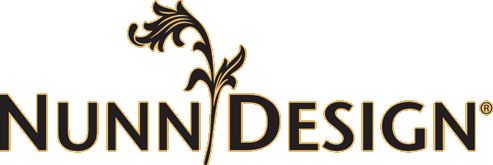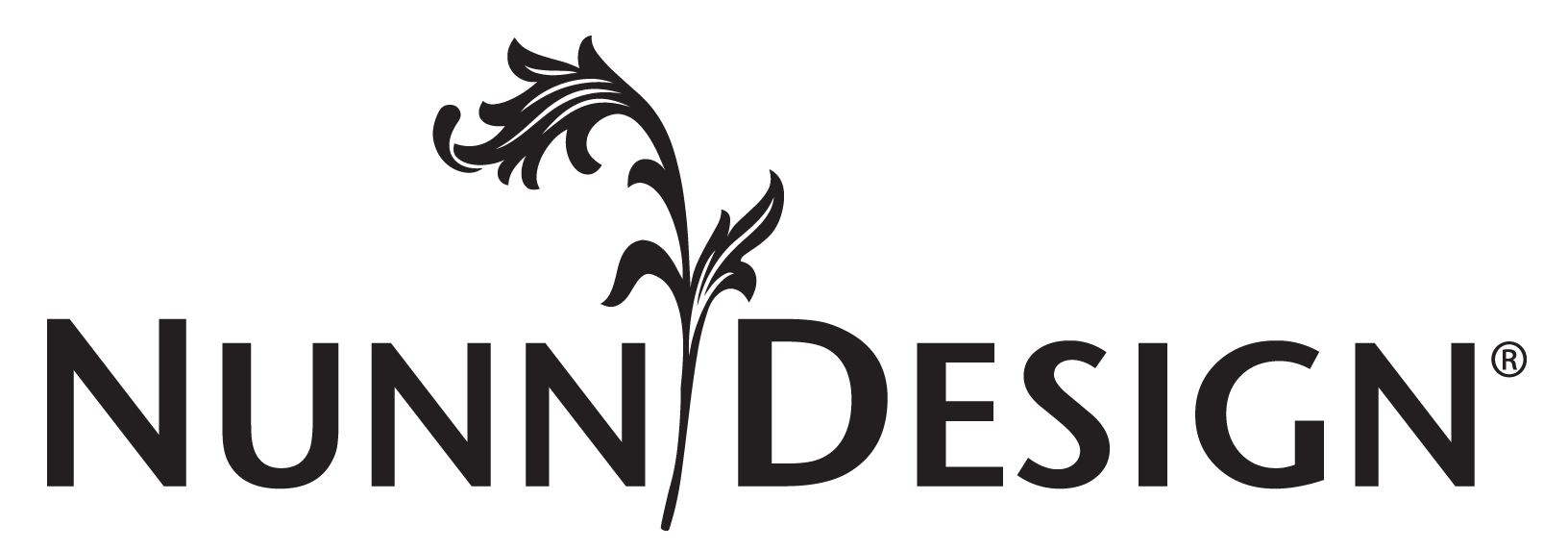DIY Kits, Transfer Sheets, Tutorials
Transfer Sheet Faux Porcelain Tutorial – Epoxy Clay, Transfer Sheets and Gel du Soleil

Learn how to create faux porcelain pieces. In the blog post, we explore creating faux porcelain jewelry using Epoxy Clay-Crystal Clay, Nunn Design Transfer Sheets and Gel du Soleil.
- What is Epoxy Clay-Crystal Clay?
Epoxy Clay-Crystal Clay is a two-part epoxy that cures in 90 to 120 minutes. By mixing together parts A and B of the Epoxy Clay-Crystal Clay, you are able to sculpt the clay, rubber stamp onto the clay and embed items into the clay. For this tutorial, the epoxy clay provides the faux porcelain base. - What is a Transfer Sheet?
The Nunn Design Transfer Sheets provide the imagery that is applied to the surface of the Epoxy Clay-Crystal Clay. The Nunn Design Transfer Sheets are printed on a film and have a paper backing that separates once submerged into water. This allows you to slide the transfer sheet right onto the clay. The effect is stunning. - What is Gel du Soleil?
The last step of this tutorial we will be applying the Gel du Soleil to create that high gloss finish. Gel du Soleil is a UV light sensitive resin. There is no mixing, no waste and the gel cures in 20 minutes when exposed to UV light.
This technique is easy enough for a beginner and the results are advanced enough for the most accomplished jewelry designer.
How to Make a Faux Porcelain Pendant with Epoxy Clay, Transfer Sheets and Gel du Soleil.
Supplies Needed:
Crystal Clay
Gel du Soleil
Nunn Design Findings UV Lamp
Transfer Sheets
Other Supplies Needed:
Wet wipes
Toothpicks or headpins Gloves
Timer
Business cards or card stock Q-Tip
Small dish of water
Paper Towel
PREPARE YOUR TRANSFER SHEET
STEP 1:
Select an image from one of the Nunn Design Transfer Sheets. Lay your empty bezel on top of the image of choice and trace your shape onto the transfer sheet. With a pair of scissors, trim the image on the inside lines of the outlined shape. Continue trimming and adjusting until it fits nicely into the bezel.


ADD THE CRYSTAL CLAY INTO BEZEL
STEP 2:
Follow the manufacturer’s instructions for the handling and mixing of the Epoxy Clay- Crystal Clay. When handling the unmixed Epoxy Clay-Crystal Clay, it is best to wear gloves. Depending on the size of your bezel, pinch off enough clay to create two equal sized balls of Part A and Part B and blend together fully until the clay is no longer marbled and uniform in color. You have approximately 90-120 minutes of working time before the clay starts to harden, so take your time. Once the clay is thoroughly mixed, remove your gloves to make it easier to work with the clay.
STEP 3:
Roll the thoroughly mixed Epoxy Clay-Crystal Clay between your palms until it forms a smooth round ball. I like the clay to be smooth because it prevents from having creases when you apply the transfer sheet. Press the ball into your bezel and create an even smooth surface by patting down the clay with your fingers. You will want to have your clay slightly under the side edge of the bezel. If you put too much clay in the bezel, the UV resin when applied will overflow and you will have clean up to do. If you do have too much clay, pinch off your excess and pat down your Epoxy Clay- Crystal Clay until clay is slightly under the rim and continue to pat until you have a smooth surface.



TIP: Make sure your clay is flushed to your side edges and there are not any gaps between your Epoxy Clay-Crystal Clay and the bezel. In order for the Gel du Soleil to cure, ALL of the Gel must be exposed to UV light. If we have some seeping into the crevices, the piece will not cure.
STEP 4:
Using a wet-wipe, clean up any excess Epoxy Clay-Crystal Clay that might have been left on the jewelry finding. The Epoxy Clay-Crystal Clay hardens like cement, so cleaning it up now and being tidy as you go makes the process easier and the results so much nicer.

APPLY THE TRANSFER SHEET
STEP 5:
Fill a small shallow dish with warm water approximately 3⁄4 of the way full. The Nunn Design Transfer Sheets are printed on a film with a paper backing. When the transfer sheet is submerged into water, it separates the film front from the paper backing. Drop one of your trimmed transfer sheets into the water and wait 30 seconds. I like to work with one of my transfer sheet images at a time, so I’m not in a rush as all of the backs release from the film fronts at the same time.

STEP 6:
The film is very fragile, so you will want to be gentle when handling it. When you remove the transfer sheet from the water, you will be able to feel the film and paper- backing slide apart from one another and then hold them in your fingers. Leave the paper backing attached to the film front and dry your fingers with a paper towel.


STEP 7:
Slide the wet film of the transfer sheet image off the paper backing and onto your Epoxy Clay-Crystal Clay filled bezel while the clay is still moist. Move the transfer sheet gently with your fingers until you have it in the position you want. Once the transfer sheet is in position, press gently with your Q-tip in the center of the image and gently burnish (another word for rub) the film down with your Q-tip. If your
film won’t stick to your surface, remove the film and paint a thin coat of the Nunn Design Sealant and reapply. If the film rips, yikes, so sorry, you’ll need to start again. Although, I have seen some really cool pieces done with the words all ripped!


Note: Transfer sheets are printed on a water decal film and do not require sealing with a sealant prior to being applied over the top of the image.
STEP 8:
Allow the Epoxy Clay-Crystal Clay to dry for at least 12 hours, well that is what I (Becky Nunn) did, but the staff of Nunn Design, on our Art Days, pour the UV resin onto the uncured epoxy clay all day long. Both turned out just fine so use your best judgment!
APPLYING THE GEL DU SOLEIL UV RESIN
STEP 9:
If your bezel has a bail, you will want to place a quarter underneath it, allowing the surface to be level. Place your bezel onto a business card or a piece of card stock. This will aid you in transferring the bezel into the UV lamp once it is filled with Gel du Soleil.

STEP 10:
Pop the nozzle off of your bottle of Gel du Soleil with a pair of needle nose pliers (if using the 5/16 oz bottle). Removing the nozzle will make is easier to pour the Gel du Soleil and limit excess bubbles in the resin.

Tip: I like to place my top from the Gel du Soleil onto a piece of plastic so it won’t get the oily resin all over my work surface.
STEP 11:
Pour a very small drop of Gel du Soleil onto the surface of the transfer sheet inside of the bezel. It is always best to under pour your resin and to continue adding to it, then to over pour and have to clean it up. Use a toothpick to move the Gel du Soleil around the surface, making a nice even coating. You will also be keeping a look out for any bubble that you might have in your resin. If you do have a bubble, you can move it around with your toothpick and hopes that it naturally pops. But if it is a stubborn cuss, you can light a match and put it over (not touching) the surface of the resin. The heat will make the air expand and the bubble will pop. If you want to have a higher dome on your piece, add an addition drip of the Gel du Soleil. When you are finished pouring the Gel du Soleil into the bezel, place the nozzle back onto the bottle and screw on the top.


TIP: If you do over pour your Gel du Soleil (hey, it happens!), use a Q-Tip to remove the over spill.
STEP 12:
If you have any excess Gel du Soleil on the bezel edges, use your wet wipe and Q-Tip to remove it. Once you expose the Gel du Soleil to the UV light, it will start to cure instantaneously, so make sure that you removed all excess Gel du Soleil off of the sides.

STEP 13:
Turn on the UV Lamp and transfer your business card with the bezel laying on the top, into the UV light. Make sure that your business card is level so that the Gel du Soleil will cure in a nice even dome and not all squished to one side or the other. Allow the piece to cure for 20 minutes.

TIP:
To allow multiple pieces in the UV light tray at the same time, you can remove the business card just minutes after you have placed the bezel in the UV light.
STEP 14:
When your time is up, remove your bezel and inspect the Gel’s surface. If you had some gaps on the edge, you can add more resin and cure again. If you have any dust, you can sand down the surface with fine grit sand paper. The surface will be frosted from the sanding, but once you pour on the Gel again, it will be clear.


Watch a Video Tutorial!
You might be interested in watching our video too!
Shop Nunn Design Wholesale
Nunn Design has been supplying jewelry artists with findings for over 20 years. Shop wholesale jewelry findings for creative jewelry makers.
Shop Nunn Design!How to Purchase Wholesale?
If you are interested in becoming one of the many designers who trust their jewelry to Nunn Design Findings, please join us by registering to become one of our wholesale customers!
Please visit our Where to Buy Page for a listing of online stores that sell Nunn Design Findings retail.
If you enjoyed reading this post, please subscribe to our blog. Here are 10 Reasons Why to Subscribe and a place to do so!







Do you sell blank transfer sheets that can be printed on with our own images?
No, we do not. You can purchase them on Amazon though!
For an Ink Jet Printer: http://www.amazon.com/Lazertran-Waterslide-Decal-Paper-Inkjet/dp/B001LUF54E
For a Laser Printer: http://www.amazon.com/gp/product/B0069F2J9K/ref=pd_lpo_sbs_dp_ss_1?pf_rd_p=1944687602&pf_rd_s=lpo-top-stripe-1&pf_rd_t=201&pf_rd_i=B001LUKOMC&pf_rd_m=ATVPDKIKX0DER&pf_rd_r=0XRWGN011J0A1STRXKZZ
Pingback: New Bird Silhouette Transfer Sheet Added - Nunn Design
Pingback: 17 Faux Porcelain Jewelry Inspirations! - Nunn Design